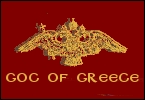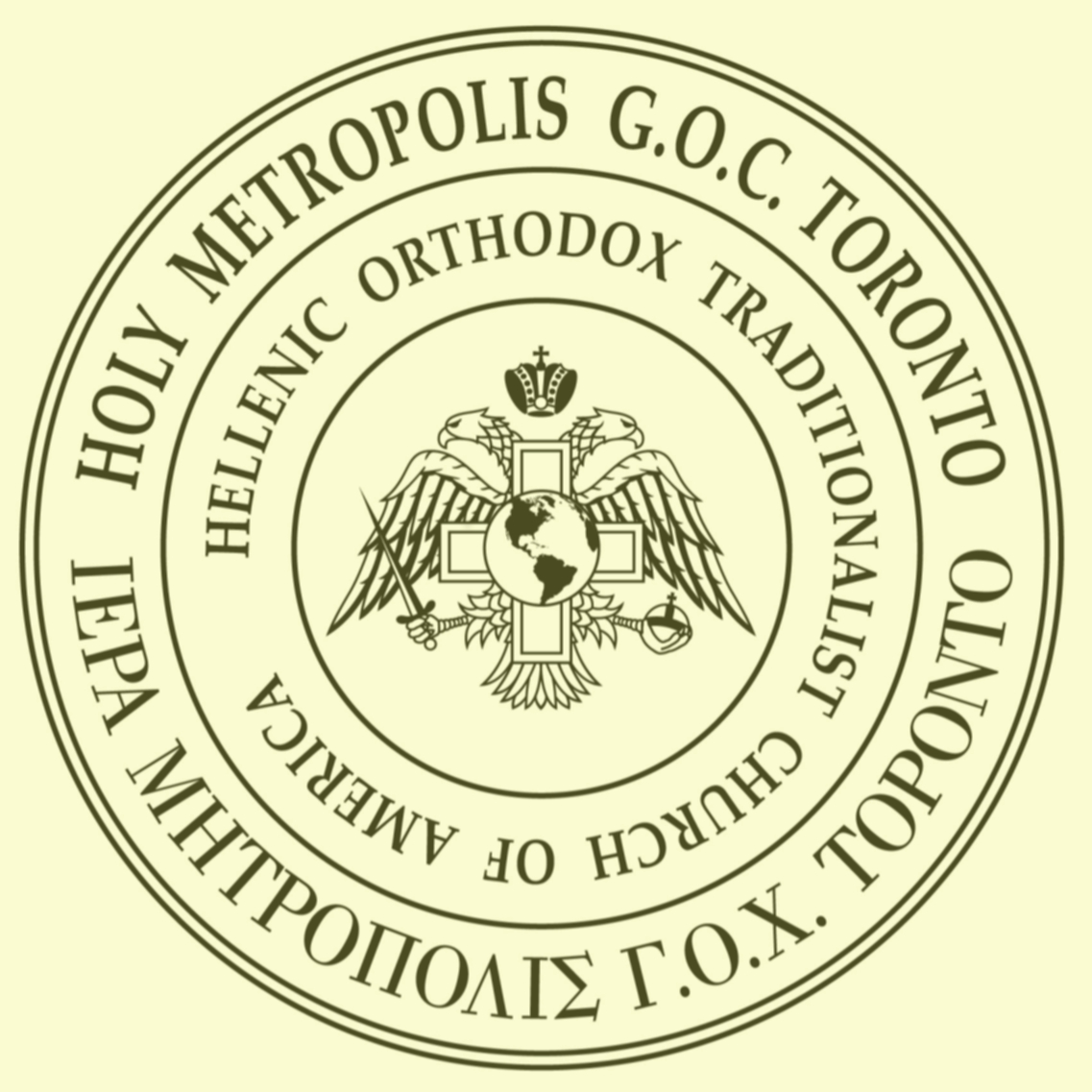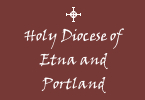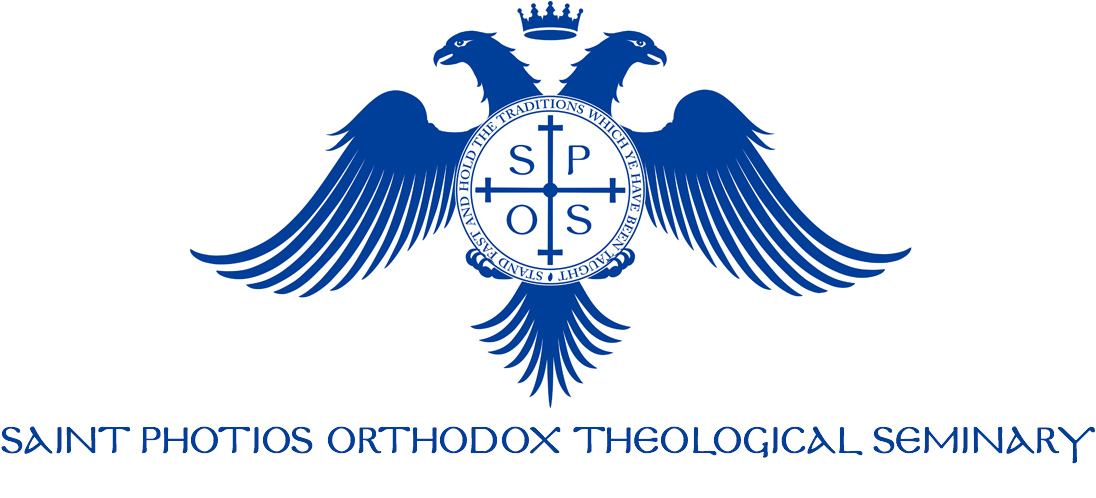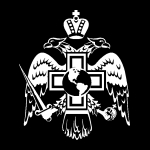The Evil Eye
- Details
- Created on Tuesday, 29 November 2011 17:28
For the past few years now I have come across a superstition among the Greek people concerning good luck and bad luck, and how one may ward off evil. Some believe that they can protect themselves from evil by wearing an evil eye talisman (τέλεσμα) around their neck, many have it hanging on a chain together with their cross.
This is not proper for a Christian because the Cross of Christ is sufficient for our protection. Evil eye jewelry, whether a pendant or a bracelet, key-chain etc., is not Christian at all. It is pagan in origin as we shall see further down. By trusting in the "protection" of the evil eye talisman we show that we do not really have faith in Christ and in the power of His Holy Cross.
In the Old Testament, the Israelites were wavering between worshiping the true God and worshiping the pagan god Baal. The Prophet Elias “came unto all the people, and said, How long will ye waver between two opinions? if the LORD be God, follow him: but if Baal, then follow him. And the people answered him not a word.” (III Kings [I Kings] 18:21) The second commandant states “Thou shalt have no other gods before me.” (Exodus 20:3) We cannot have faith in Christ and simultaneously have faith in trinkets which are of demonic origin.
The following is from a company which sells evil eye jewelry called the Evil Eye Store which tells the history of the evil eye talisman.
“At almost every stage of human history, man has looked for the assistance of magic objects called talismans to defy evil forces. Talismans with letters, numbers or abstract signs have survived to this day. Even the modern religions with a single god have their own evil eye symbols. [!!!] One of these symbols we find in almost every culture and faith for thousands of years. It’s the figure of an eye. Belief in the evil eye is strongest in the Middle East, East and West Africa, South Asia, Central Asia, and Europe, especially the Mediterranean region.
Evil eye beads go back thousands of years. Evil eye jewelry is believed to give protection from the evil eyes, covetous friends and strangers.
It is also known in most languages: In English as evil eye, evil look - in French Mauvais Oeil - in German böse Blick - in Arabic ayin hasad (eye of envy) - in Armenian pasternak - Yiddish aynore or ahore from Hebrew ayin harac - Hungarian szemmel verés (beating with eyes) - Polish oko proroka ( the eye of the prophet ) - Sicilian jettatura (casting) . Brazilian Portuguese has olho gordo (fat eye) or quebranto (breaker) - in Spanish mal de ojo (the eye's curse or ojo turco - ojito turco)- in Irish droch-shuil - in Greek matiasma or mati refers to the act of cursing someone with the evil eye.
It's believed that there are three types of evil eyes. The first are unconscious evil eyes. These harm people and things, without intending to. The second type intends to harm. The third one is unseen, hidden evil which is the most sacred one.
It was believed that this eye saw all the wickedness in the world and removed poverty and ignorance. When Horus opened its eyes the world was enlightened, when he closed, it became dark. From Egypt, the eye talisman had spread to the Mediterranean, Middle East and Europe.
The bead reflects the evil intent back to the onlooker. It somewhat resembles an eye and it is said the typical blue color is a factor in protecting the user.
What is the meaning of Hamsa Hand or The Hand of Fatima Amulets with Evil Eye Symbol?
A blue eye can also be found on some forms of the hamsa hand jewelry, an apotropaic hand-shaped amulet against the evil eye found in the Middle East. The word hamsa, also spelled khamsa and hamesh, means five referring to the fingers of the hand. In Jewish culture, the hamsa is called the Hand of Miriam; in Muslim culture, the Hand of Fatima. The Fatima amulet is called a Khamsa in Muslim world, from the Arabic word for five, and is seen as protection against the evil eye. The amulet consists of five spread fingers, often with an eye on the hand. It can be found today throughout the Middle East in women's jewelry, as hamsa bracelet, hamsa necklace, hand of fatima pendant, flat-weaving, embroidery, door-knockers, automobile ornamentation, and so on.
According to the Native American version, a person who stares fixedly at a pregnant woman or a child or who is too admiring or physically affectionate with children may produce a malicious effect on their lives, whether or not by intent. Our new series is hand hammered evil eye bracelets with cross or hamsa symbol. Hamsa hand evil eye bracelets and necklaces are worn by people who have the faith in a - Supreme Power - and find themselves at a cross-road in life. [Orthodox Christians, on the other hand, have faith in our Lord, God and Saviour Jesus Christ, not in some “Supreme Power”] Carefully crafted pieces - High quality materials and created by master artisans to bring the protection of positivity to the wearer.”
Evil eye jewelry is obviously demonic in origin in that it is present in many pagan religions. It is naturally forbidden for the Orthodox Christian to mix Christ together with pagan idolatry. St. Paul asks: "...what fellowship hath righteousness with unrighteousness? and what communion hath light with darkness? And what concord hath Christ with Belial? or what part hath he that believeth with an infidel? And what agreement hath the temple of God with idols?" (2 Cor. 6:14-16)
Some have asked me “does the Orthodox Church believe in the evil eye?” The answer to this would depend on what is meant by “the evil eye”. If the talisman is meant as a means whereby evil may be warded off, then the answer is “no”. The Orthodox Church teaches that evil and witchcraft do in fact exist. People who are envious of other people may harm others through the aid of demonic forces. Protection from demonic forces is found only within the Ark of Salvation; the Church, the Body of Christ, which has Him as Its head. Such things as the «ξεμάτιασμα» or “de-eyeing” which exist in secular Greek culture where a woman recites self-composed prayers, and then blows and spits in the person’s face etc., are a blasphemous mockery of the Mysteries of the Orthodox Church. Evidence that “de-eyeing” is outside the realm of the Church is that it does not exist in any ecclesiastical book and is always performed by lay-women, not by the clergy of the Church. There is however, a prayer in the Euchologion which is appointed for the priest to read for the one affected by a spell, composed by St Basil the Great.
Some Greek Orthodox Christians have told me that wearing the evil eye talisman and performing the "de-eyeing" as a means to ward off evil is part of the Greek Orthodox religion. On the contrary, these things have nothing to do with Christianity, they are satanic, something which the Greeks call «λευκή μαγεία» or “white magic”. There is no such thing as good magic, all magic is demonic. Our Lord, God, and Saviour Jesus Christ has told us “…if Satan cast out Satan, he is divided against himself; how shall then his kingdom stand?” (Matt. 12:26) The idea that there is "good magic" is simply another ruse of the evil one who, as we know, is transformed into an angel of light. (2 Cor. 11:14)
Further evidence that the evil eye talisman is not Christian is that it exists nowhere in Orthodox iconography, vestments or other church adornments. It may be argued that in some Greek Orthodox churches there is an eye contained within a triangle with rays emanating from it, this is not universally accepted and of doubtful origin.
The Rudder has the following to say about protection from spells: “Some persons recommend that those couples who are about to be wedded, in order to remain unharmed by any such binding (or spell), should first confess all their sins, fast and partake of the divine Mysteries, and afterwards get married, as we have said. Some order that the bridegroom carry on his person the volume of the four sacred Gospels when they are being married. And experience has shown the efficacy of faith in many persons. For, according to divine Chrysostom, wherever there is (an Orthodox edition of) the Gospel, the Devil does not dare to approach, accordingly, it is an ancient custom for women and young children to hang Gospels round their neck by which they obtain great protection (Homily 32 on the Gospel according to St. John etc.)”.
Concerning «φυλακτά» “phylakta” (plural, singular is φυλακτόν): A phylakton is a small pillow with a cross on both sides, there should not be an eye on one side, which is usually pinned on a baby’s clothing for protection from demonic energies. What is contained in the phylakton is as follows: After the consecration of a church there remains in a pot a remnant of wax-masticha and other materials used during the consecration, included in the mixture is Holy Myrrh. This mixture is hot and in liquid form. The white garment which the Bishop wore during the consecration is then put into the pot and the pot is wiped clean with the garment. When the garment dries and becomes hard, being soaked with the mixture, it is cut into small pieces and sown into the “phylakta” and given out to the faithful as a blessing. This is a perfectly Orthodox Christian practice in concert with the above mentioned custom of wearing a Gospel around our necks. After all, we all wear crosses so as to keep Christ close to our hearts.
Orthodox Awareness
Refutation of an "Encyclical Sermon"
Refutation of an “Encyclical Sermon” by a Hierarch of the New Calendar Orthodox Church of Greece and a Wily Denigrator of Anti-Ecumenists and “Old Calendarists” Who Have Walled Themselves Off From His Church
by His Grace, Bishop Clement of Gardikion, Secretary of the Holy Synod
In Greek
In English
Missions
Saint Matthew the Evangelist, Jonesboro, Arkansas
Jonesboro is a town located near the Eastern border of Arkansas, with a population of approximately 60,000. From a human standpoint, it’s not the most likely candidate for a traditional Orthodox mission, but for an Orthodox Christian who orders his priorities around Christ and His Church, it makes perfect sense. Read more...
Youth
2025 Youth Conference
Please join us for the 2025 youth conference in Toronto, Ontario, Canada! To learn more, visit the conference website.
Ask A Priest
Why do we Call Angels “Saint”?
Q. I noticed that we call the angels Michael and Gabriel "Saint." I thought the title "Saint" was only given to humans who have proven themselves Godly. Do you mind clarifying this for me? Is there a deeper meaning to "Saint" that I am not aware of?
-S.L. Read more...

